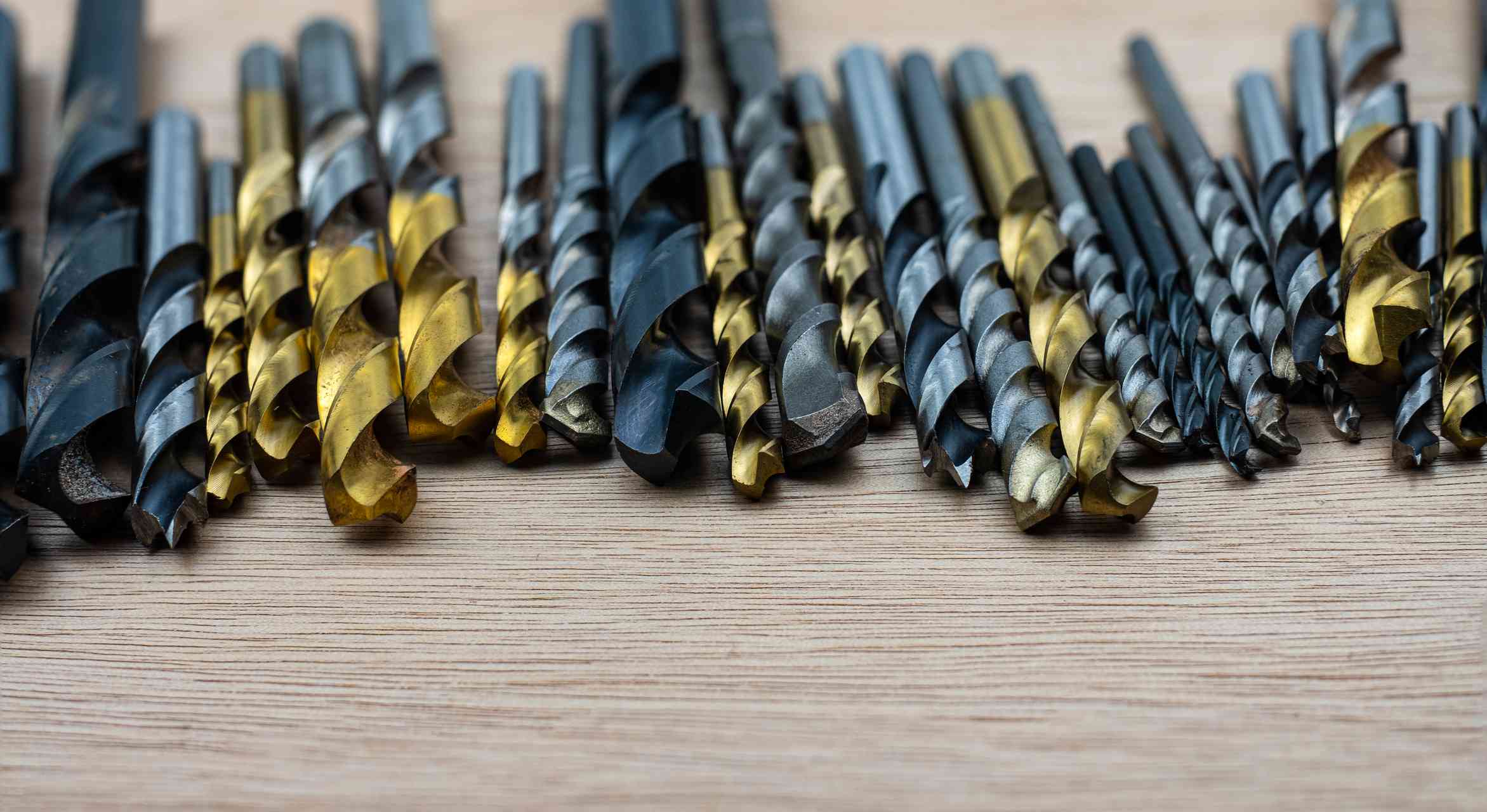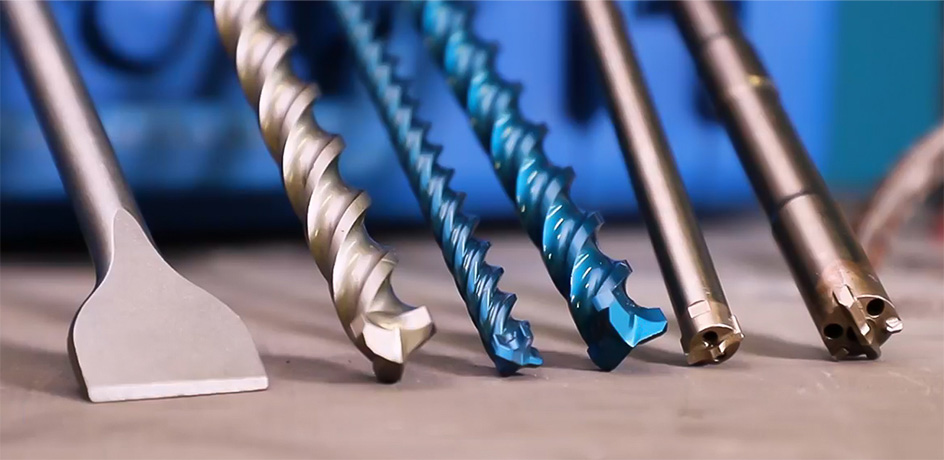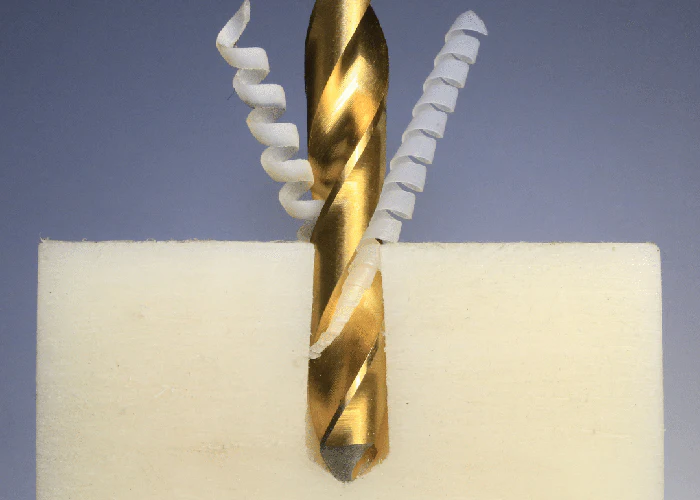Drill bits are essential tools that allow us to bore holes into various materials. From DIY home projects to heavy duty construction work, having the right drill bit is key to efficient and successful drilling. This raises an important question – can drill bits be made of plastic?
Plastic is ubiquitous in many household objects and tools these days. From kitchenware to toys to various parts in appliances and electronics, plastic is valued for being an inexpensive, lightweight and durable material. This makes it seem like an obvious choice for making drill bits. However, the suitability of plastic for drill bits depends on several factors.
Introduction to Drill Bits
Before going into whether plastics can make viable drill bits, it helps to understand what drill bits are and what they do.
What are Drill Bits?
Drill bits are cutting tools that are mounted on drilling machines and used to create cylindrical holes in various materials. The drilling machine provides power that rotates the drill bit at high speeds, creating enough force so the bit can pierce and grind its way through the material being drilled.

Key Parts of a Drill Bit
Drill bits come in many sizes and designs but in general, they have four key parts:
- Tip – This is the very end of the bit that comes in contact with the material being drilled. Based on the drill bit design, it can be flat, cone-shaped, pointed or serrated.
- Cutting Edges – These are the sharp angled edges near the tip that actually slice into the material to penetrate and carve out the hole.
- Flutes – The helical grooves that wrap around the body of the bit and help channel dust, debris and material chips up and out as the hole is being drilled.
- Shank – The end that gets clamped into the drill chuck. Made of steel so it can withstand high torque and rotating speeds.
These parts work together to pierce and grind material as the bit rotates at high speeds. The right combination of precision, sharpness and durability is vital for drill bit effectiveness.
Considerations for Drill Bit Materials
Drill bits must be made of materials that can withstand friction, heat and impact forces while maintaining sharp cutting edges. Just a few key considerations include:
Hardness
The material must be hard enough to scrape and penetrate tough materials without deforming or wearing out too quickly. Harder materials retain their sharp cutting edges better.
Toughness
The drill bits undergoes significant bending forces. The material needs to be tough enough so bits don’t crack or snap under pressure.
Heat Tolerance
Friction while drilling creates considerable heat. The material must resist softening, warping and degrading at high drilling temperatures.
Wear Resistance
The material needs to resist erosion from abrasion and corrosion over time from use, cleaning solutions or storage conditions. This helps maintain sharpness.
The right drill bit material optimizes these considerations, striking a balance between hardness for sharpness and toughness for strength and durability.
Properties of Plastics
Plastics encompass a wide range of synthetic materials with vastly different properties. The most common plastics fall into two broad categories:
Thermoplastics
This category includes materials like acrylic, nylon, polyethylene, polypropylene, polystyrene and ABS. They can be repeatedly melted and shaped upon heating.
Thermosets
This includes materials like epoxy, phenolic resins and polyurethane. They harden permanently during molding so they cannot be reshaped after initial heat forming.
Within these categories are hundreds of plastic types and formulations with varying properties. Key traits in relation to drill bits include:
Hardness & Wear Resistance – Softer than metals. They erode faster from friction and abrasion over time depending on type.
Toughness – Toughness varies greatly. Thermosets tend to be more brittle. Materials like nylon are flexible and impact-resistant.
Heat Tolerance – Typically have lower melting points than metals. Sensitive to heat deformation and degradation.
Chemical Resistance – Better chemical/corrosion resistance than metals in some cases. Depends on plastic and chemical.
In summary, while plastics can approach metals in some regards, they lag behind in critical properties like hardness, heat tolerance and wear resistance. This affects their viability as drill bit materials.

Are Plastic Drill Bits Practical?
Can plastic effectively replace or stack up against traditional metal drill bit materials based on the required properties? Let’s compare their suitability.
Hardness & Sharpness
Plastics achieve Shore D hardness ratings between 60 and 100, while drill bit metals like carbon steel and tungsten/cobalt alloys are far harder. This gives plastics significantly lower hardness and sharpness. Plastic drill bit edges would wear down and deform faster.
Toughness
Thermoset plastics are too brittle while thermoplastics may bend excessively under load. Only the most rigid, engineered thermoplastic formulations provide sufficient toughness. They still trail behind steel.
Heat Tolerance
The heat from friction while drilling can reach several hundred degrees Celsius. Most plastics have much lower melting points, making them prone to warping and degradation. While some advanced plastic compounds have higher heat resistance, metals are still superior for heat tolerance.
Wear & Chemical Resistance
Plastics offer reasonably good chemical and corrosion resistance. Their erosion rates from abrasion are higher compared to metals but they can match or exceed metals in certain low-friction or non-abrasive applications.
In summary, plastics fall short of metals in most of the critical performance criteria for drill bits – hardness, sharpness, toughness and heat tolerance. They wear down faster and won’t penetrate or bore as efficiently.
However, they can potentially match metals in niche applications that leverage their wear resistance, chemical resistance or insulation properties. Their lower production cost is also a major advantage.
Applications of Plastic Drill Bits
While plastic lacks key traits to fully replace metal drill bit materials, its properties can serve specific low-intensity drilling needs at lower price points.
Arts & Crafts Drilling
Small, disposable plastic drill bits are well-suited for drilling softer materials like wood, linoleum or leather during arts, crafts and hobby projects. They generate less heat, are chemically inert and have little metal contamination risk.
Electronic & Precision Drilling
Certain plastics like PTFE (Teflon) or PEI (Ultem) work for precision drilling of printed circuit boards, sheet metals and plastics where accuracy is vital but materials are thin, soft or fragile. Their heat insulation helps prevent damage.
Underwater & Chemical Drilling
Plastic or plastic-coated bits are unaffected by water corrosion. This allows drilling metals and composites in underwater applications. Plastics also withstand certain caustic chemicals better, enabling drilling in reactive environments.
In these types of niche cases, specialized plastic drill bits can replace metal equivalents depending on the specifics of the application and materials involved.
Other Drill Bit Materials
Beyond plastics and metals, drill bits are also fabricated from other materials like tungsten carbide, ceramics and diamonds. Here’s a brief look at their key traits and applications:
Carbon & High-Speed Steel (HSS)
- Very hard while remaining tough
- Best all-round metals for low-to-moderate drilling speeds
- Common in general purpose drill bit sets
Cobalt & Titanium Alloys
- Excellent heat resistance retain hardness and strength
- Used for high speed, heavy duty drilling into hard metals
Tungsten Carbide
- Extremely hard and wear resistant
- Brittle so best for rigid machines and stationary drilling
- Used for steel and concrete drilling
Ceramics
- Maintains hardness at very high temperatures
- No melting point limits like metals
- Used for glass drilling and other hard, abrasive materials
Industrial Diamonds
- Ultimate hardness makes them ideal for drilling stone, masonry and other extremely hard matter
- Expensive and requires diamond-impregnated metals
- Specialized for heavy duty tasks like oil drilling and mining
Each material has traits that make them suitable for specific drilling requirements – from precision electronics jobs to large scale industrial projects.
Making the Best Choice
- For most common drilling purposes into wood, metals and plastics, carbon steel or HSS bits provide the best combination of hardness, toughness and affordability. Cobalt bits add heat resistance for high speed drilling.
- Ceramics and tungsten carbide excel when drilling hard, abrasive matter like concrete and stone.
- Plastics work for very light duty arts & crafts jobs or unusual chemical/temperature conditions where their specialty properties are needed.
- More advanced materials like diamond or ceramic suit ultra-tough precision drilling and industrial applications but come at a higher cost.
Consider factors like drilling conditions, target material, hole size/depth, cost constraints, heat risks and expected bit life span when deciding on the optimal drill bit fabrication material.
FAQ’s about Plastic Drill Bits
Still have some lingering questions about plastic drill bits and how they compare? Here are answers to some frequently asked questions.
Are plastic drill bits durable?
No. Plastics have much lower hardness and heat resistance than drill bit metals. While plastics resist chemicals and corrosion better, they erode faster from friction and abrasion. They would wear out sooner than quality steel bits under most drilling loads.
Can plastic drill bits be sharpened and reused?
No, plastic bits cannot be resharpened like metal ones. Attempting to manually sharpen them will likely damage them further. Disposable plastic bits must be thrown out once their cutting edges are blunt and ineffective.
What materials can plastic drill bits cut?
Basic plastic drill bits for crafts and hobby work can only cut very soft materials like balsa wood, foam or very thin plastics. More advanced plastic formulations like reinforced nylons may handle tougher tasks like drilling metals or composites in specialist fields. But common plastics cannot match metals in drilling capability.
Why are plastic drill bits cheaper?
Injection molded plastic bits are far simpler and cheaper to mass produce compared to forged, CNC-machined steel bits. Lower material costs and easier manufacturing allows plastics bits to sell at lower price points. Their shorter lifespan offsets this advantage though.
How can you identify plastic drill bits?
Plastic drill bits are labeled as acrylic, Teflon, nylon, polycarbonate or other plastic types. They have a glossy molded look rather than the metallic sheen of steel or carbide. Being lightweight is also an indicator of plastic construction. The packaging or catalog listing will clarify the bit’s composition.
The Bottom Line
While plastics fall short as general purpose drill bit materials compared to metals, their low cost, chemical and heat insulation traits make them suitable for light-duty craft drill or specialty precision/chemical drilling applications.
Carbon steel, HSS alloys, tungsten carbide and ceramics have superior hardness, toughness and heat tolerance to reliably bore holes in metals, wood and other robust materials using standard drilling machines.
So in most cases, it’s best to choose traditional drill bit metals over plastics for their durability and drilling effectiveness. But specially formulated plastic drill bits serve niche low force or unusual temperature/chemical drilling needs well.
They key is matching the bit material performance to the target drilling application. With an array of options now available, drill bit materials can be specified based on careful consideration of key factors explored in this article.
I hope this guide has shed light on what drill bits are made of and specifically whether plastics can serve as drill bit materials compared to metals and other fabrication options. Let me know if you have any other questions!
